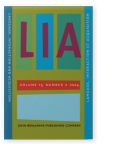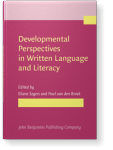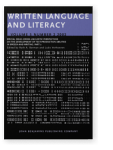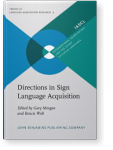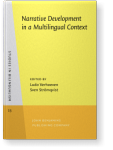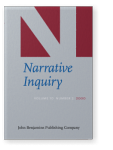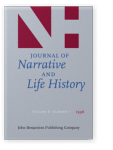Judy Reilly
List of John Benjamins publications for which Judy Reilly plays a role.
Journal
2018 Chapter 19. Spoken and written narratives from French- and English-speaking children with Language Impairment\ Sources of Variation in First Language Acquisition: Languages, contexts, and learners, Hickmann, Maya †, Edy Veneziano and Harriet Jisa (eds.), pp. 409–426 | Chapter
Children with Language Impairment (LI) show significant delays in spoken language development with persistent problems in morphology. In this chapter, we compare spoken and written narratives from children with LI and their typically developing peers (TD) in French and English. We investigate the… read more
2017 Written narratives in children with autism Developmental Perspectives in Written Language and Literacy: In honor of Ludo Verhoeven, Segers, Eliane and Paul van den Broek (eds.), pp. 379–398 | Chapter
Children with Autism Spectrum Disorder (ASD) who are high functioning often perform in the normal range on standardized language measures, but they show impairments in the social use of spoken language, especially in more naturalistic situations. As they enter school, literacy, that is, learning to… read more
2015 Gradients of plasticity: Language and emotion in children with unilateral perinatal stroke Emotion in Language: Theory – research – application, Lüdtke, Ulrike M. (ed.), pp. 343–366 | Article
Despite their partially distinctive neural substrates, in typical adults language
and emotion function together as well-integrated communicative systems. Both
patient and neuroimaging research has furthered our knowledge of the brain
organization underlying language and emotion, yet we know little… read more
2002 Passive voice constructions in written texts: A cross-linguistic developmental study Cross-Linguistic Perspectives on the Development of Text-Production Abilities in Speech and Writing. Part 2, Berman, Ruth A. and Ludo Verhoeven (eds.), pp. 163–181 | Article
The distribution of passive constructions is examined in written texts produced by native speakers of five Languages (Dutch, English, French, Hebrew, and Spanish), from four Age groups (aged 9–10, 12–13, 15–16 years, and adults). These languages contrast in the variety of structures available to… read more
2002 FACES: The acquisition of non-manual morphology in ASL Directions in Sign Language Acquisition, Morgan, Gary and Bencie Woll (eds.), pp. 159–181 | Article
2002 Propositional attitudes in written and spoken language Cross-Linguistic Perspectives on the Development of Text-Production Abilities in Speech and Writing. Part 2, Berman, Ruth A. and Ludo Verhoeven (eds.), pp. 183–218 | Article
This study considers the use of modal expressions (auxiliaries like should
,
can), semi-modals (e.g. have to, be likely to), and adverbials and complement-taking expressions (maybe, it is possible that ) to convey the attitudes and feelings of speaker/writers about the events they describe… read more
2001 15. From affect to language: development of evaluation in narratives in spoken English and American Sign Language Narrative Development in a Multilingual Context, Verhoeven, Ludo and Sven Strömqvist (eds.), pp. 399–418 | Chapter
2000 Narrative as a Social Engagement Tool: The Excessive Use of Evaluation in Narratives from Children with Williams Syndrome Narrative Inquiry 10:2, pp. 265–290 | Article
Williams syndrome is a rare genetic disorder characterized by a unique physiological and behavioral profile, involving excessive sociability and relatively spared linguistic abilities in spite of mild to moderate mental retardation. The present study examines the narrative development of children… read more
1998 PAH! The Acquisition of Adverbials in ASL Sign Language & Linguistics 1:2, pp. 117–142 | Article
1996 Looking for Frogs in the Narrative Stream: Global and Local Relations in Maternal Narratives Journal of Narrative and Life History 6:1, pp. 65–86 | Article
Abstract In this study, we compared storytelling of a pictured narrative, Frog, Where Are You?, by 6 Deaf and 6 hearing mothers in American Sign Language (ASL) and in English, respectively. How do these mothers construct their stories, that is, how do they mark episodes? And how do… read more
1992 How to Tell a Good Story: The Intersection of Language and Affect in Children's Narratives Journal of Narrative and Life History 2:4, pp. 355–377 | Article
Abstract This article reports two studies in which the developmental relationship be-tween affective and linguistic expression is explored by comparing the comple-mentary skills of storytelling (performance) and story construction (structure). In the first study, children of the two age groups (3-… read more
